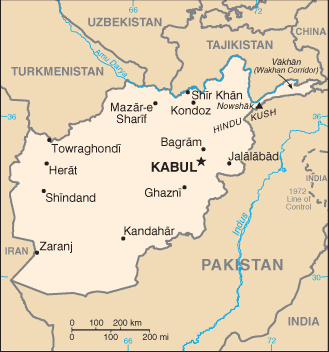NewsDesk @bactiman63
This website reported on a measles outbreak in Badakhshan province recently and now the World Health Organization (WHO) put out some details on the situation in the country.

They report: Following periods of lower transmission in 2019 and 2020, and amid the humanitarian crisis in Afghanistan, weekly notifications of suspected measles cases have been increasing in all provinces since the end of July 2021, with the highest weekly toll observed in the last four weeks in January 2022. The number of cases and deaths increased by 18% and 40% respectively from week 4, 2022 (week commencing January 24) to week 5, 2022 (week commencing January 31).
Subscribe to Outbreak News TV on YouTube
From 1 January 2021 to 29 January 2022, 35 319 suspected measles cases were reported in Afghanistan, of which 3221 (9%) were laboratory-confirmed by IgM-ELISA in the seven reference laboratories (one national and six regional). Most of the suspected measles cases (91%) occurred among children less than 5 years of age. During the same period, 156 measles deaths were reported among the confirmed cases (CFR=4.8%), with more than 97% of the fatalities registered among children less than 5 years of age. Although the number of deaths is relatively low, the rapid rise in cases suggests that the trend of reported deaths will continue to increase sharply in the coming weeks.
The most affected provinces, with the highest number of reported cases (confirmed and suspected) are Balkh, Ghazni, Helmand, Kandahar, Kabul, Paktika, and Paktya.
The large and widespread outbreaks and the increasing number of reported measles cases in Afghanistan, is due to a variety of complex factors that on the one hand have resulted in the low immunization coverage of both first dose of measles-containing vaccine (MCV1) and second dose (MCV2), on the other has exacerbated the impact of the outbreak (e.g. high levels of acute malnutrition, winter conditions and crowded domestic situation, previous displacement).
The 2020 WHO/UNICEF national immunization coverage estimates were 66% for MCV1 and 43% for MCV2. At the sub-national level, administrative coverage data shows that six provinces achieved less than 50% MCV1 coverage (Kandahar 40%; Paktya 38%; Jozjan 37%; Khost 36%; Helmand 18%; Urozgan 3.1%).
The internal displacement of 698,000 people in 2021 was another driver of low MCV coverage. Internally displaced persons (IDPs) frequently live in conditions that increase susceptibility to measles (e.g. through less access to immunization services) and may increase measles exposures (e.g. through over-crowding) as well as experiencing poor health outcomes (e.g. due to factors like increasing risk and rates of malnutrition, poor access to curative services).
Cross-border travel due to the recent instability in Afghanistan has increased the risk of international spread, particularly in Pakistan and Iran.
- Timor-Leste: Dengue surge nears 2000 in first weeks of 2022
- Lassa fever in the UK: 3rd case confirmed, death
- Anthrax confirmed in Indonesia outbreak
- Ebola virus persistence, re-emergence even after treatment in nonhuman primates
- UCLA-led team launches new center to study Valley Fever
- Ivermectin: One dose just as effective as two at reducing scabies, according to study
- Bird flu in the US is low risk to public: CDC
- Cutaneous Leishmaniasis in Balochistan and Khyber Pakhtunkhwa provinces, Pakistan

